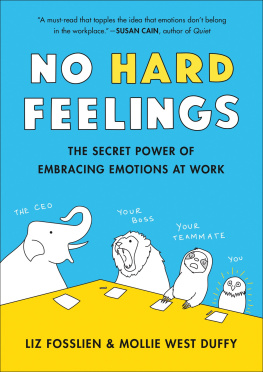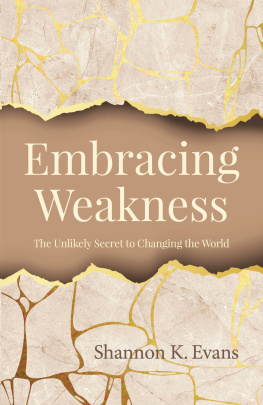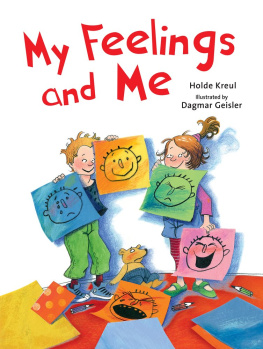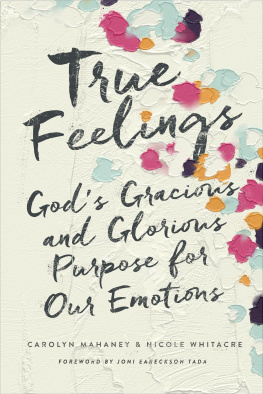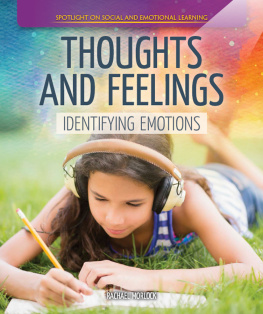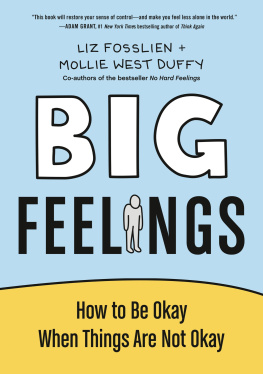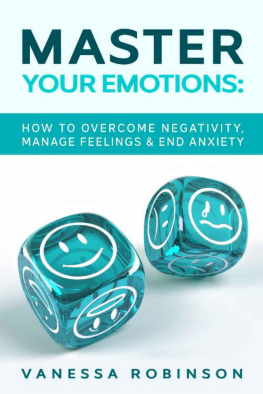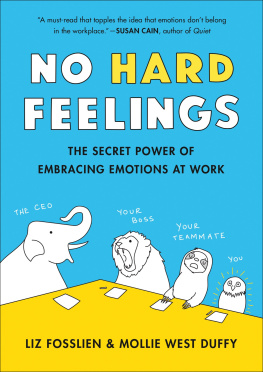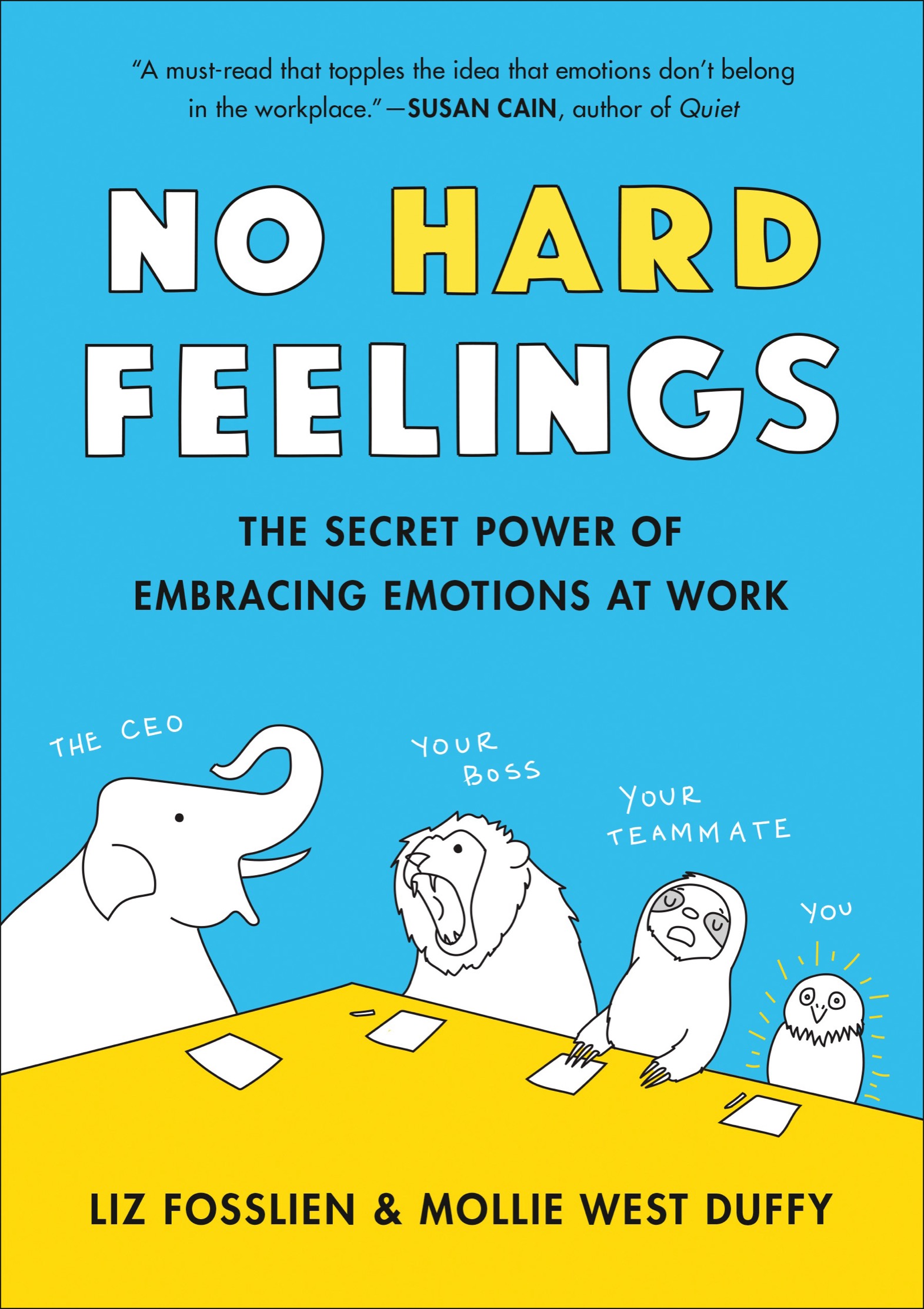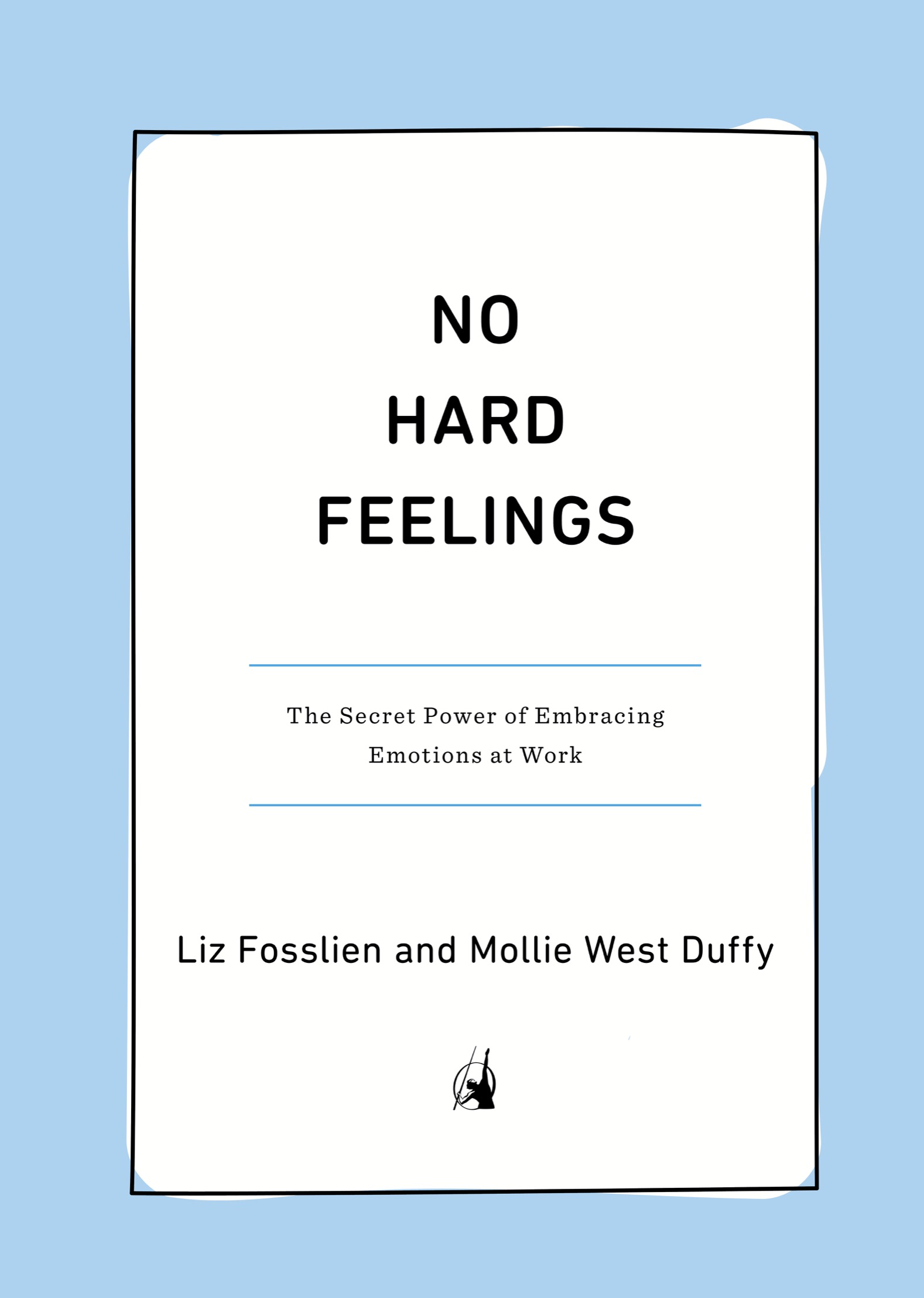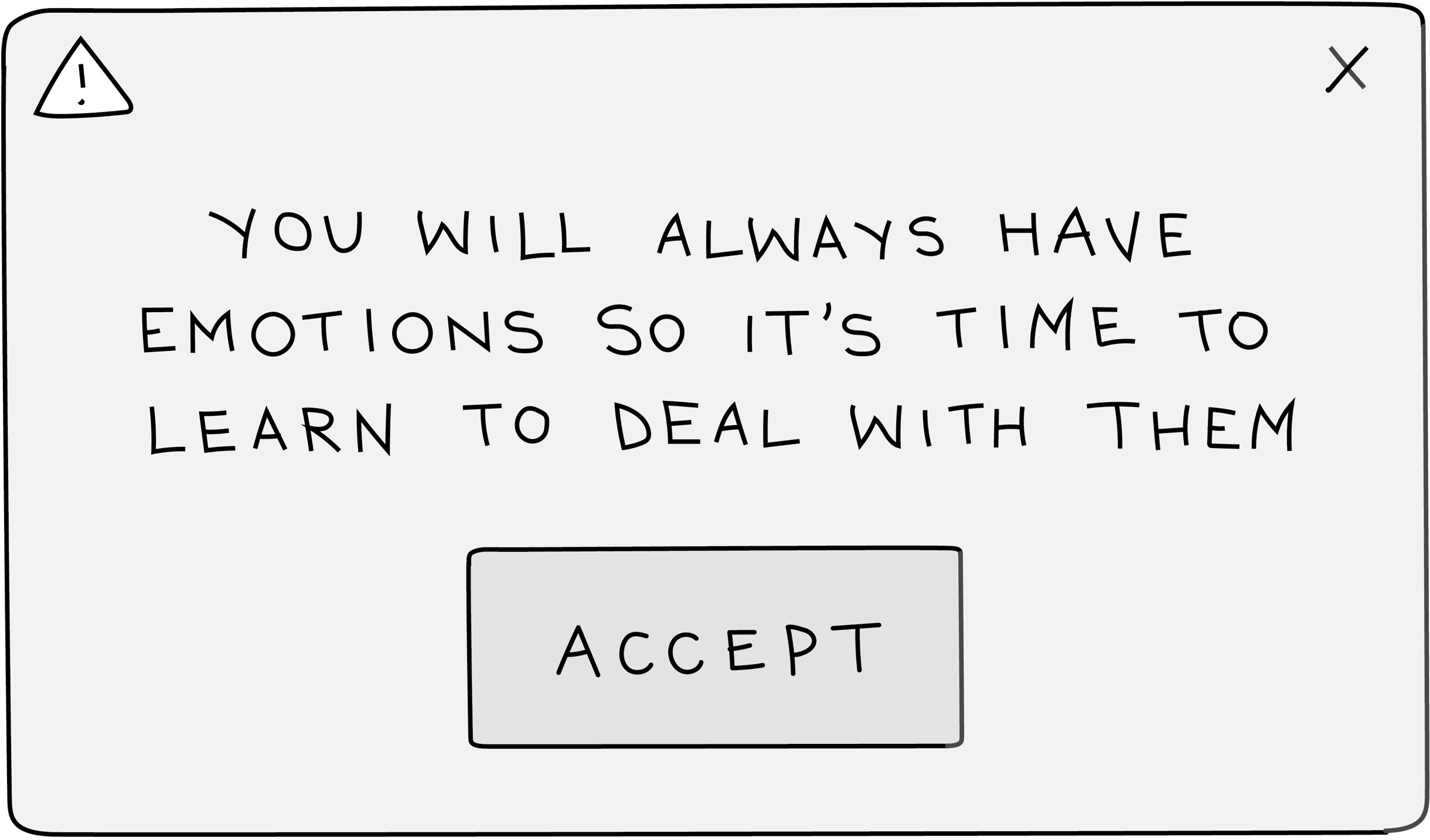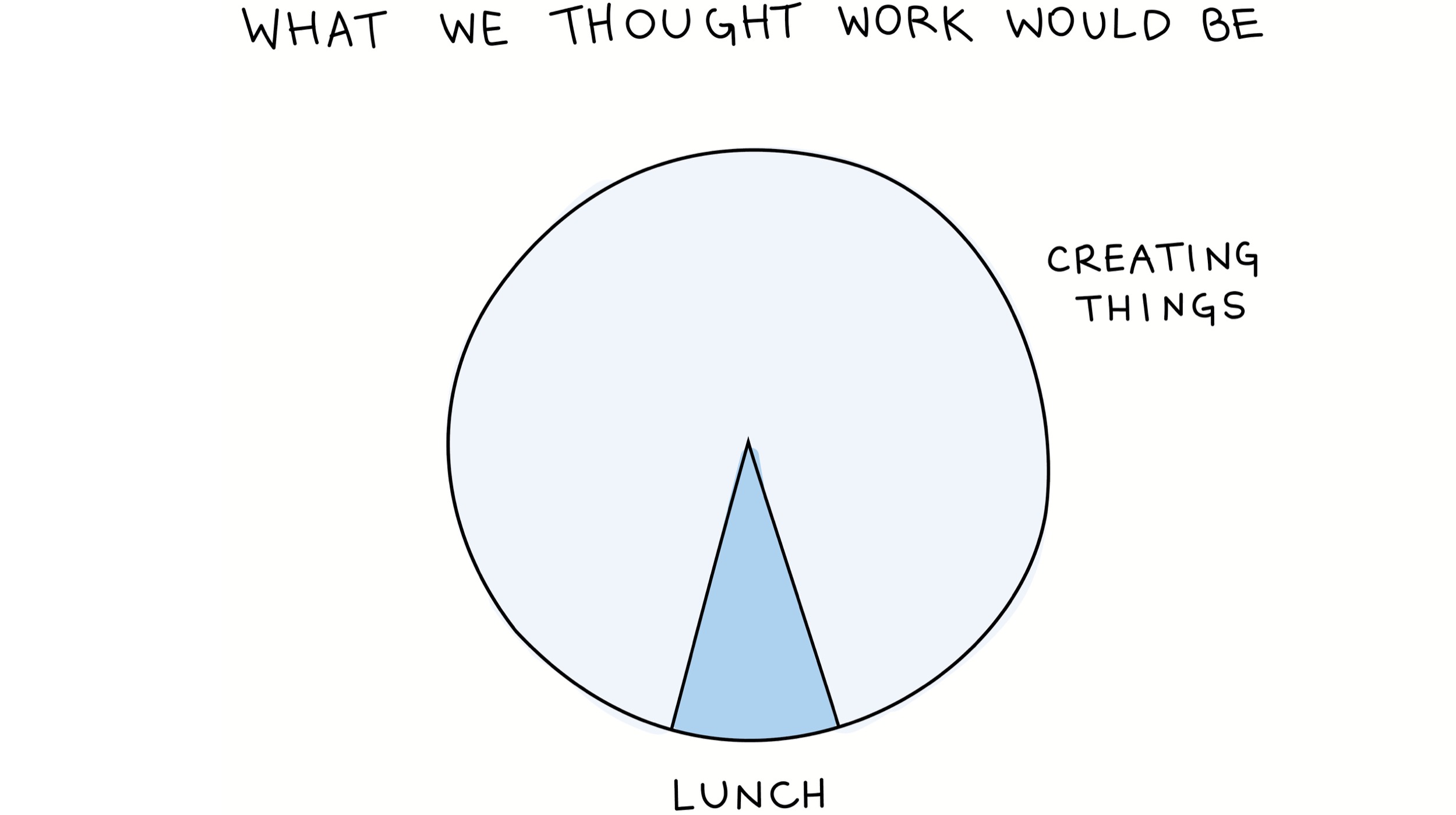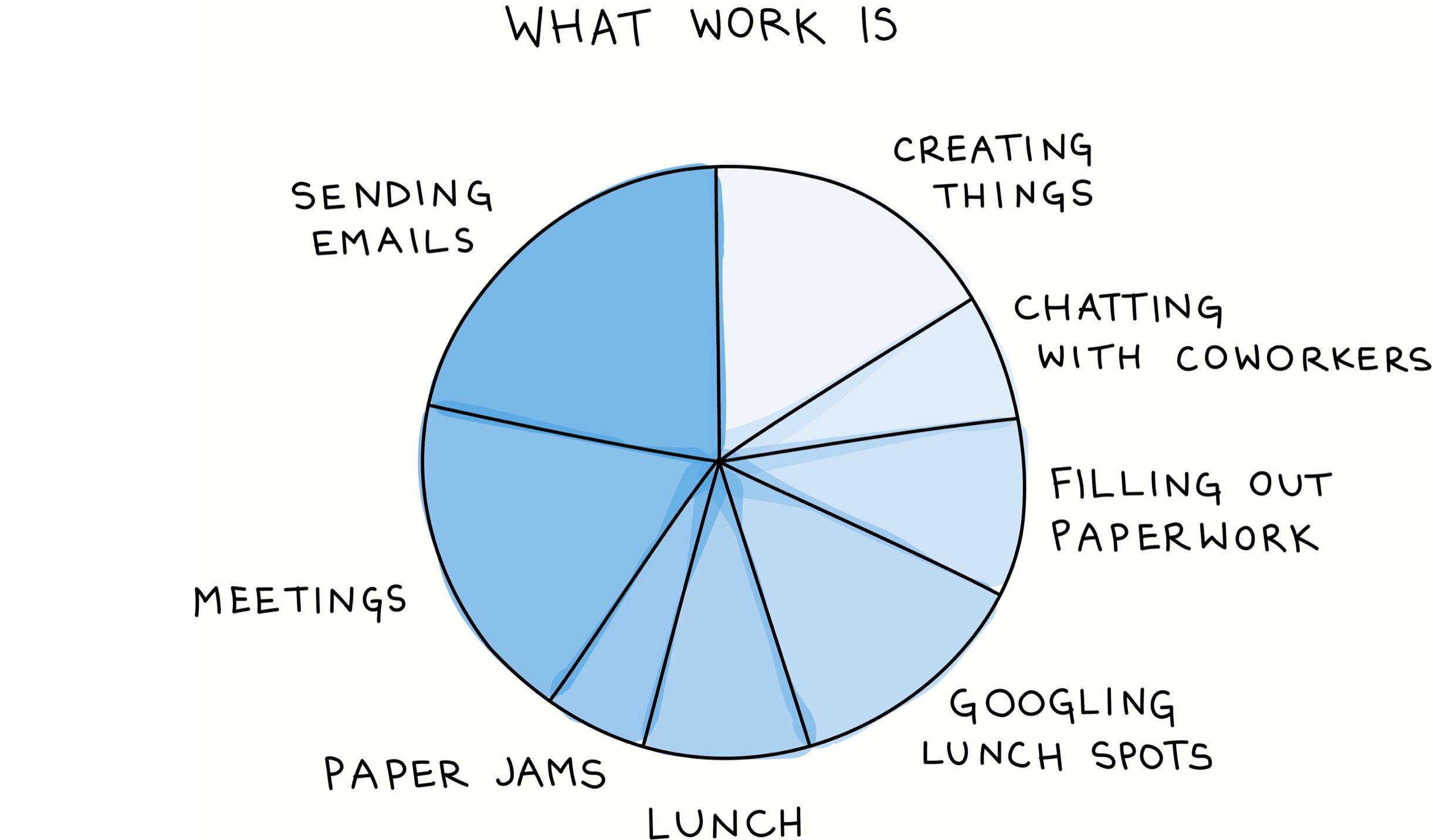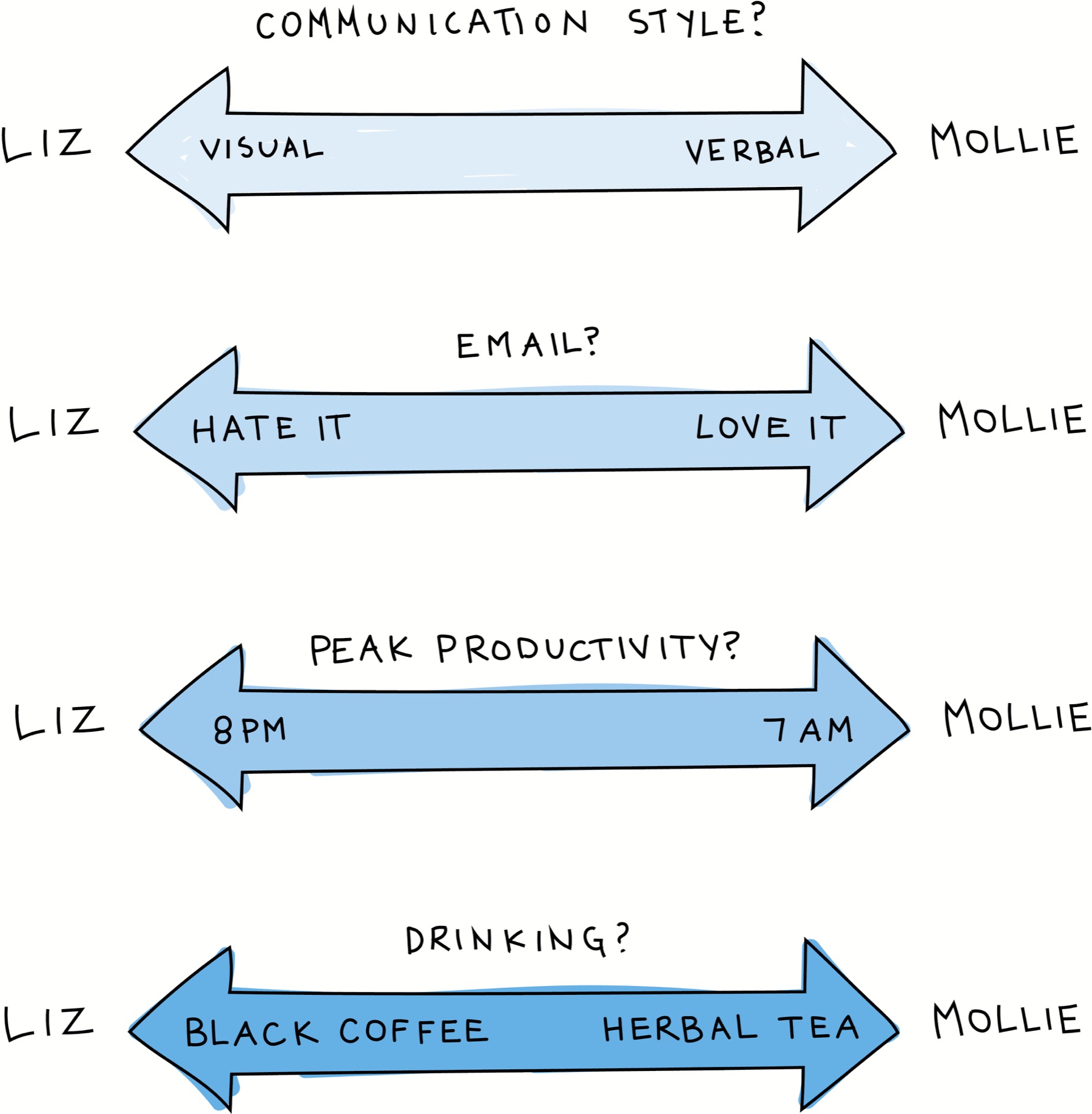
Portfolio/Penguin
An imprint of Penguin Random House LLC
375 Hudson Street
New York, New York 10014

Copyright 2019 by Liz Fosslien and Mollie West Duffy
Penguin supports copyright. Copyright fuels creativity, encourages diverse voices, promotes free speech, and creates a vibrant culture. Thank you for buying an authorized edition of this book and for complying with copyright laws by not reproducing, scanning, or distributing any part of it in any form without permission. You are supporting writers and allowing Penguin to continue to publish books for every reader.
ISBN: 9780525533832 (hardcover)
ISBN: 9780525533849 (ebook)
Version_2
To our families, with the greatest emotion of all: love.
CONTENTS
CHAPTER 1
The Future Is Emotional
When Howard Schultz returned to lead Starbucks in 2008 after an eight-year hiatus, he cried. Not alonehidden in a bathroom stall or locked in his corner officebut in front of the entire company.
Daily sales figures were falling by double digits. The two CEOs who preceded Schultz had grown the company at breakneck speed, but when the recession hit in 2007, the foundations of this hastily constructed empire began to wobble.
Ahead of his return, Schultz spent nights in bed staring at the ceiling, worrying about what he would say on his first day back as CEO. He desperately wanted to reassure tens of thousands of employees that their livelihoods were not in jeopardy. But boosting morale wasnt just a strategic move; he felt personally responsible for the well-being of the people who worked at Starbucks. Schultz, who had grown up poor and watched his parents struggle to make ends meet, knew how much they depended on their jobs.
When he walked onstage, he realized his employees needed to see vulnerability from the person they were trusting to fix their problems. The truth was, he felt distraught about the direction the business had taken while he was gone, and they deserved to know that. Schultz chose to lift a mask that few employeesmuch less CEOsremove in front of their coworkers. Setting aside formality, he let tears roll down his cheeks.
Crying can sometimes seem manipulative or calculated. But Schultz had the emotional intelligence to pair this moment of vulnerability with a reassuring follow-up: he laid out his plan for a comeback and then invited feedback from workers. That month, Schultz was flooded with more than five thousand appreciative emails. And by 2010, the tide had turned: Starbucks stock price was higher than ever.
Most of us vastly underestimate the size and scope of the emotional needs we bring to the office. Beyond the leader-employee relationship, emotional dynamics affect our motivation, health, communication, decision making, and more. Yet most of us ignore those emotions. Why is it that when we think of professionalism, we immediately jump to the idea that we should suppress everything we feel?
This is a book from two friends who each had to learn, somewhat painfully, the importance of acknowledging emotion at work. When we started our first jobs, we thought professionals did not fail, did not fuss, and certainly did not feel. But we soon realized this view is unrealistic and stands in the way of our sense of fulfillment, and ultimately our success.
As a young analyst at an economic consulting firm, Liz had gotten the job she thought she always wanted. But long nights of staring at depositions under fluorescent lights left her increasingly depressed and anxious. Liz finally quit, with no backup plan. She took a job at Starbucks to pay the bills and started researching why she had been so unhappy and what she could have done to improve her mood.
Meanwhile, Mollie was working in a stressful job as a product manager for a start-up. She woke up one morning and realized the area above her right eye was completely numb. When the sensation didnt go away after a few days, Mollie went to a doctor. The diagnosis? Anxiety. The numbness was caused by the tension Mollie held in her shoulders and neck. In that moment, Mollie realized she needed a different job. She wanted to work in an office where she didnt have to bite down high levels of fear, anxiety, and frustration until they caused her physical pain.
But Mollie couldnt quit right away, and it took six months for her to find a new job. As she looked, she started reading about emotion, culture, and the workplace because she knew what it felt like to be stuck in an unhealthy work situation. Liz continued to do the same. Our goal was to better understand our feelings: When are they useful and when are they just noise? Can we mold them to change how we experience work? Were guessing you opened this book looking for answers to similar questions.
Our shared story began in 2014 when a mutual friend set us up on a platonic blind date. We bonded immediately: were both introverts, and we both have an irreverent sense of humor, need to wear sleep masks to get a good nights rest, and enjoy taking on creative side projects. By then, we were each working in New York; Liz had decided to move from the West Coast to take a job at Genius, a (then early-stage) music-media company, and Mollie was in grad school.
When we met, our shared interest in the myriad ways emotion affects work led us to start coauthoring illustrated articles on the topic. But we soon hit a stumbling block: we had never worked closely together before, which led to miscommunication. Mollie felt that Liz was obsessing over details that no one else would notice, whereas Liz felt that Mollie was moving too fast. Our email exchanges became more and more tense, and our projects soon stalled. Hoping to save our personal and professional relationship, we scheduled a dinner to discuss our issues in person.
It was hard! Neither one of us wanted to say anything for fear of making the other person feel bad. But our differences went deeper than our perennial coffee vs. tea debate and needed to be brought out into the light. And to do that, we had to overcome our instinct to pretend feelings didnt matter.
Had we not already been researching emotions at work, we probably wouldnt have given so much credence to our feelingsand wed never have noticed that building trust always preceded our best creative teamwork. But since we were paying attention, we noticed how much emotion affected every part of our collaboration

